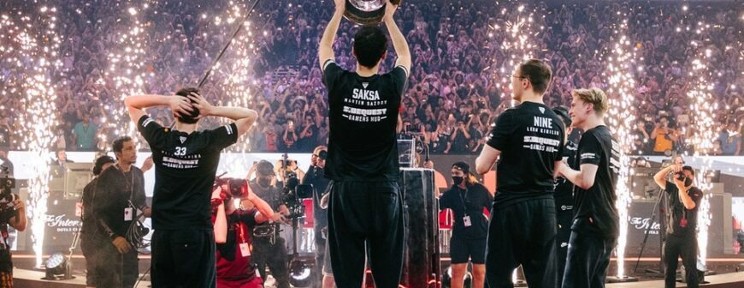Dota 2, much like a rapidly evolving ecosystem, has little patience for those who step away from its competitive current. This stark reality was recently underscored by none other than Roman `RAMZES666` Kushnarev, a name synonymous with high-tier carry play. During a candid Twitch stream, RAMZES666 offered a sobering perspective on the formidable challenge faced by professional players attempting a comeback after a significant hiatus – a year, by his estimation, being a chasm too wide for many to bridge.
The Unforgiving Pace of the Pro Scene
In traditional sports, an athlete might take a year off to recover from an injury or for personal reasons, and while regaining peak form is challenging, the fundamental rules and physical demands often remain largely consistent. Esports, particularly a title as dynamic as Dota 2, operates on a completely different clock. A year in Dota 2 is not just 365 days; it`s a cascade of meta shifts, patch updates, hero reworks, and strategic innovations. What was dominant six months ago might be obsolete today, and yesterday`s cutting-edge tactic could be tomorrow`s meme.
This relentless evolution means that a player on the sidelines isn`t just losing practice; they`re losing touch with the very fabric of the game at its highest level. Mechanical skills, while foundational, rust quickly. More critically, the intuition, the understanding of current power spikes, optimal item timings, and prevailing team compositions – these are constantly in flux. RAMZES666`s observation highlights that simply “watching Dota” isn`t enough; passive observation, no matter how keen, cannot replicate the visceral experience of competitive play.
The Illusion of the “Dream Team” Reunion
The conversation that sparked RAMZES666`s reflections revolved around a fan`s suggestion for a hypothetical “dream team” composed of several currently inactive or struggling high-profile players: dyrachyo, kiyotaka, RAMZES666 himself, RodjER, and Solo. On paper, it sounds appealing – a collection of seasoned talents. However, RAMZES666 quickly dismantled the romantic notion, pointing out the extensive inactivity of players like RodjER (over 1.5 years without a team) and Solo (recently left his last team).
This isn`t merely about individual skill; it`s about synergy, communication, and the intricate dance of five minds operating as one. Building a new team from scratch with multiple players who have been out of the competitive loop for extended periods is an uphill battle of monumental proportions. It`s like asking a group of brilliant musicians, each rusty on their respective instruments, to form a world-class orchestra overnight without a conductor or prior rehearsal.
The Tundra Exception: A Blueprint for Return?
RAMZES666 did, however, offer a glimmer of hope, drawn from his own recent experience: returning to an “already established team.” His brief but impactful stint with Tundra Esports serves as a compelling case study. Joining a team with an existing structure, established communication patterns, and a solid understanding of the current meta allows a returning player to integrate and absorb critical knowledge far more efficiently. Instead of having to rebuild everything from zero, they can plug into a functional system and focus on regaining their individual form and adapting to the team`s dynamics.
This suggests that a successful comeback isn`t just about raw talent or past achievements; it`s about finding the right vehicle. It requires humility to learn from an existing unit and the ability to quickly integrate into a pre-existing synergy. For players who have been away, this path offers a pragmatic alternative to the almost insurmountable task of forging a new top-tier squad from a collection of similarly “rusty” individuals.
Beyond the Mechanics: The Mental Game
The challenge of returning goes beyond just understanding the game or shaking off mechanical rust. The mental fortitude required for professional esports is immense. The pressure of performance, the relentless grind of practice, the constant scrutiny, and the emotional resilience needed to bounce back from losses are all attributes that can diminish without continuous engagement. A year out of the spotlight can erode this mental toughness, making the journey back even more arduous.
RAMZES666`s insights serve as a stark reminder of the cutthroat nature of professional Dota 2. While fans may yearn to see their favorite legends reunited, the reality of the esports treadmill dictates a harsh truth: time away is an incredibly expensive commodity. For those who dare to attempt a return, the path is fraught with challenges, favoring only those who can find the perfect synergy – be it a ready-made team or an unparalleled individual commitment – to once again compete at the pinnacle of the game.

